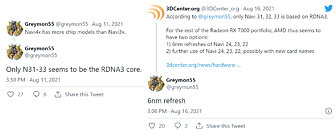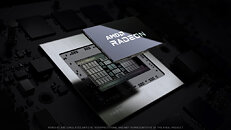
Powercolor RX 7900 XTX Hellhound White Edition GPU Incoming
Powercolor has teased an upcoming reveal, set to happen on April 11, for a White Hellhound Edition of what appears to be (hash-tagged) an AMD Radeon RX 7900 XTX graphics card. A single image of the soon to be revealed model was uploaded to various Powercolor social media sites today. The Specral White colorway is likely applied to the PCB, backplate, fans, bracket and shroud. Powercolor has a consistent history of releasing all-white Hellhound edition cards - quite the rare aesthetic in this market segment.
The current black version of the Hellhound AMD Radeon RX 7900 XTX was released last December. The upcoming Specral White iteration seems to share the same LED switching system and twin 8-pin PCIe power inputs - as seen in the teaser image. By and large the specification and feature sets are anticipated to be identical between each model.
The current black version of the Hellhound AMD Radeon RX 7900 XTX was released last December. The upcoming Specral White iteration seems to share the same LED switching system and twin 8-pin PCIe power inputs - as seen in the teaser image. By and large the specification and feature sets are anticipated to be identical between each model.




































